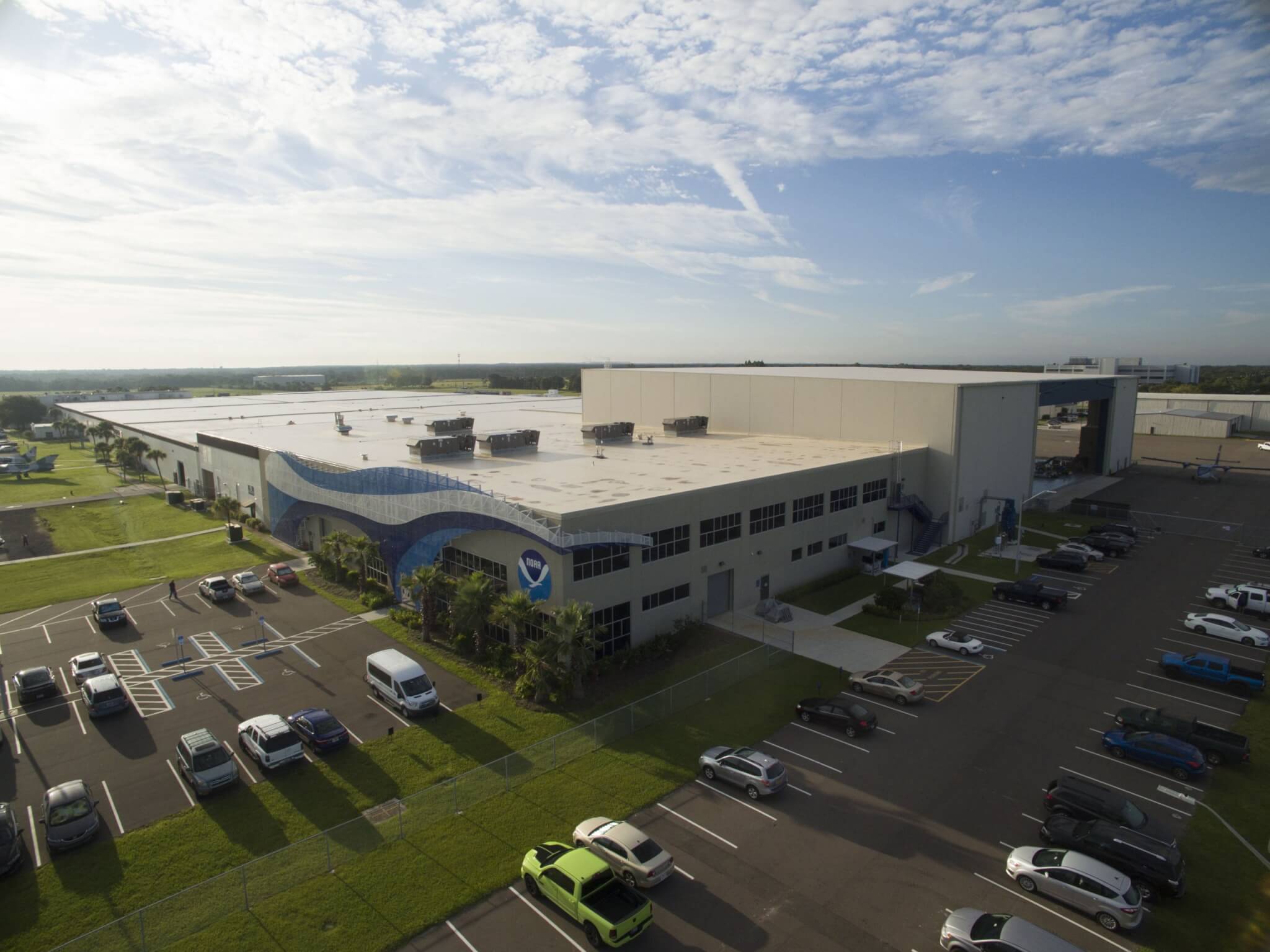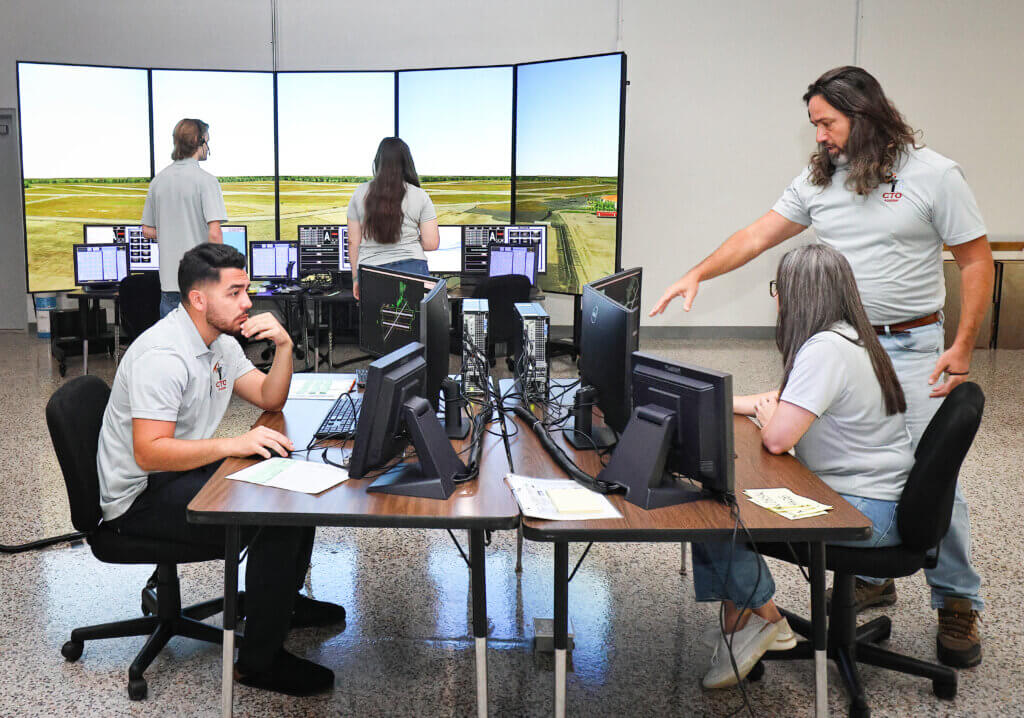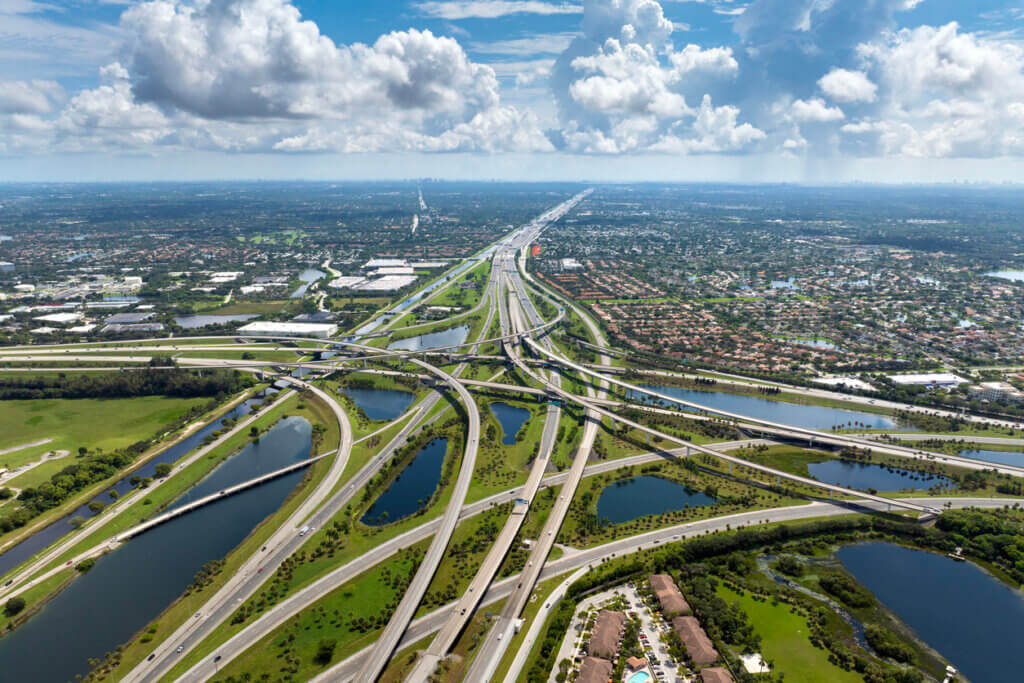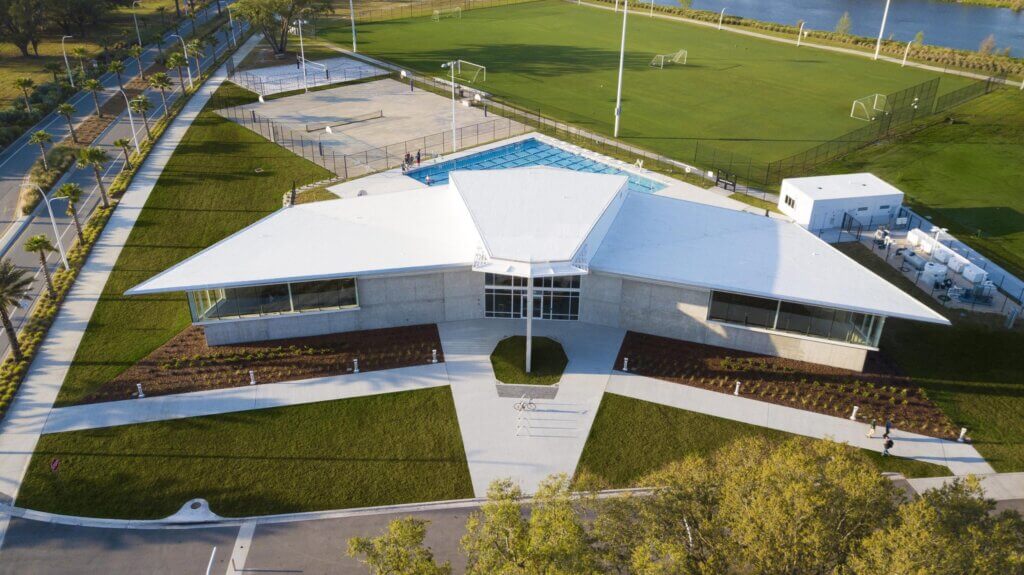Growth at Lakeland Linder Airport Diversifies Revenue, Brings Stability
Aviation and aerospace remain a critical component to Polk County’s economy, and Lakeland Linder International Airport continues to add to that cluster.
On the heels of landing Amazon Air in late 2019, Lakeland Linder will now continue its expansion with the announcement that the National Oceanic and Atmospheric Administration will add more employees and three new aircraft to its fleet of Hurricane Hunters based there.
“We’ve been working since August 2019 on this expansion,” said airport director Gene Conrad. Along with 50 to 75 new employees and the new planes comes something even more important, a firm 15-year lease that could reach 20 years.
“That’s what’s really important to us at the airport,” Conrad said. “It solidifies their existence here for a long time.”
NOAA moved the home operation of its Hurricane Hunters from Tampa to 100,000-square-feet of space in the Aircraft Operations Center at Lakeland Linder in 2017. This expansion will add another 69,000 square feet to the space it leases. The Lakeland City Commission approved the contract for the $12.3 million expansion, Conrad said.
High-skill, Higher-wage Jobs
The year-round presence of the Hurricane Hunters helps raise the profile of the airport, Lakeland and Polk County, Conrad said. And, they bring high-skill, high-wage jobs. “They have 110 team members here. Bringing more jobs to our community is what we’re focused on.”
Those jobs are coveted, especially as the county continues to plan the Central Florida Innovation District.
“NOAA has highly skilled workers who can stimulate the development of our Innovation District and, more importantly, the Florida Polytechnic University students who one day might work there to turn research into innovations and inventions that are extremely important to the state,” said retired Air Force Major General USAF (ret.) Jake Polumbo, chairman of the Central Florida Development Council’s board of directors.
NOAA also brings stability, a steady revenue stream.
Diversification
“Look at what’s happening with the pandemic,” Conrad said, adding that revenue from NOAA and other long-term leases helps with continuity.
“Ten years ago, we were not as diversified as we are now. Revenues were $3.5 annually, next year they will be over $10 million. It’s taken a lot of hard work by our team, city manager’s office and city commissioners to focus on specific things that diversify our revenue.”
Not relying on commercial air service like the airports in Huntsville, Alabama, and Springfield, Illinois, has helped, he said.
“They are really suffering right now because a lot of revenue comes from commercial tenants. We’re not harmed,” Conrad said. “We have a great pool of revenue. Amazon is coming on as well. It puts us in a good spot to weather the ups and downs in the economy that are inevitable.”
Conrad said preparing the airport for NOAA’s arrival in 2017 showed how quickly the airport can adapt.
“That provides other companies, like Amazon, an example, a showpiece, that says: ‘This is what we can do.’”
Although the space the airport can lease is at capacity, Conrad would still like to attract new businesses.
“We’ve had the opportunity,” he said. “Companies that do maintenance are interested, but nothing as of yet. But that doesn’t mean it won’t happen in the future.”
NOAA plans to add three more aircrafts to its fleet of nine at Lakeland Linder. Together, the fleet will study hurricanes and tropical storms, as well as serve in an emergency response capacity and take photographs after a storm hits, Conrad said.
The Hurricane Hunters also are important to the state, and not just during hurricane season, which starts June 1.
“Their work is very high tech, and they do critical research for hurricane predictions and preparations, as well as on climate change,” Polumbo said. “Florida needs their data and analysis to prepare for the changes we’re seeing to our coastlines and water levels. NOAA’s growing presence also makes Central Florida key and essential in protecting the Gulf of Mexico after the Deepwater oil spill 10 years ago. We’re fortunate to have these talented scientists and skilled operators with us here in Lakeland.”
The city is paying $4 million for some work at the airport and financing the rest. NOAA will pay the city back through its lease, which now amounts to $2.5 million annually for 15 years, Conrad said. That includes rent, operating costs and loan repayment.
The timing couldn’t be better as air traffic has fallen off quite a bit since the coronavirus pandemic hit, Conrad said. Tenants are still flying into and out of the airport, and he thinks others will come back. “But I think it will be slow in returning as companies figure out finances and where they are at.”
Updates on Other Projects
- Amazon Air is moving “full steam ahead” on its $100 million air cargo hub on 47 acres, and its 223,000-square-foot building will be ready June 1, Conrad said. “All ground support equipment is starting to arrive, and they will start training ground handlers at the beginning of May.”
- The airport is putting the finishing touches on a $25 million project to upgrade its No. 1 asset — a runway that will be used for the next 20 years, he said. The runway meets Amazon’s minimum standards and is available for commercial service users.
- Conrad said the airport’s master plan was submitted to the Federal Aviation Administration three weeks ago and he is waiting for their comments. The biggest change in the plan is relocating the airport’s smaller runway to make it parallel to the major runway.



